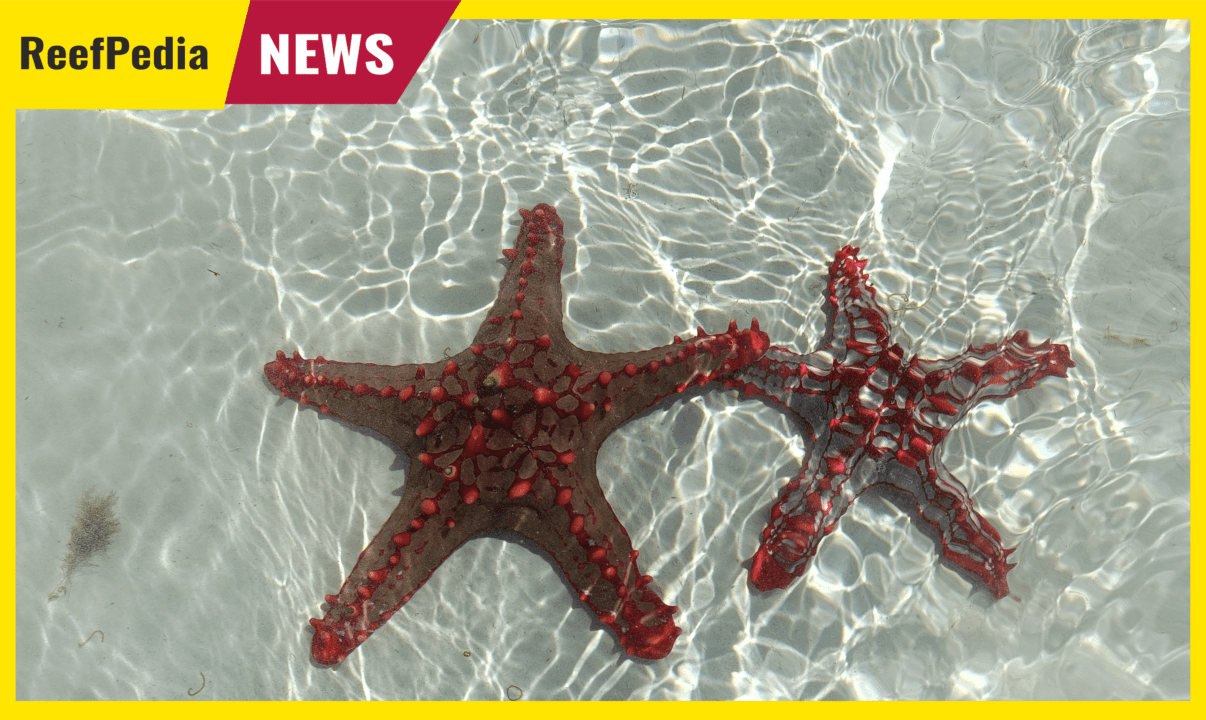Dear Reefs,
When visiting different corners of the world, we have the opportunity to observe the underwater world, where one of the residents is the starfish. These fascinating marine creatures not only adorn this landscape with their beauty but also play a key role in marine ecosystems.
It is often observed that tourists, for the sake of taking a picture, pull these beautiful organisms out of the water. Remember that every interaction with starfish should be carried out with the utmost care. Removing starfish from the water, even for a short time, is an action that can cause them significant harm or even lead to death. Starfish breathe through their entire body surface and take in oxygen through small structures called papulae—skin gills. By taking them out of the water, we deprive them of access to oxygen, which can lead to rapid suffocation. Often, contact with air causes embolism, and even if the starfish seems unharmed when returned to the water, it may die after a few days.
Moreover, the radial canals in starfish have numerous small branches called ambulacral feet, which are extremely delicate and can easily be damaged by touch or pressure. The ambulacral feet serve a locomotor function, allowing adherence to the substrate and burrowing into it. Furthermore, they participate in food capture, gas exchange, and receiving tactile, chemical, and light stimuli.
Removing the natural protective layer of mucus from the starfish’s surface during handling can also expose them to infections.
Often, moving a starfish to take a picture from one location to another, such as the shoreline, results in a change in water temperature (shoreline water is warmer), which leads to thermal shock.
I encourage you to admire these extraordinary creatures with respect and in their natural environment. Instead of taking starfish out of the water for photos or touch, it is better to observe them from a distance, which does not disturb their natural rhythm of life, does not cause unnecessary stress, and, most importantly, does not put them at risk of death.
Education and awareness are key to the protection of starfish and other marine creatures. By sharing knowledge about the effects of our actions, we can help protect these beautiful creatures. I encourage you to spread this knowledge among your family and friends because by doing so, we care for and respect marine life without unnecessarily disrupting their natural rhythm of life.
Let our actions while admiring the underwater world reflect respect and care for all forms of life. Remember that our choices today affect the future of our planet. Together, we can make a difference by protecting the beauty and diversity of marine life.
Please help educate others by sharing this article. Your action can contribute to spreading awareness about responsible starfish observation in their natural environment. Every share increases awareness and helps promote responsible behaviors, which are crucial for protecting our valuable natural resources.
Thank you for your understanding and support in protecting starfish and other marine organisms.
About the author

Grzegorz Bubak
My fascination with marine aquariums began over two decades ago when I stumbled upon an article about this topic in a magazine. Since then, the underwater world has become my obsession and passion, shaping my everyday life. I started my adventure with marine aquariums with soft corals, which were my first step into this fascinating world. Over time, captivated by the diversity and beauty of SPS corals, I decided to focus on their cultivation, which continues to fill me with constant wonder.
Thanks to my experience and passion for marine aquariums, I am ready to share my knowledge and expertise with other enthusiasts in this field. I am happy to be part of the Reef Pedia community, which serves as an invaluable source of information for all marine aquarium lovers.

